-
 Bitcoin
Bitcoin $83,003.8346
-0.90% -
 Ethereum
Ethereum $1,787.6973
-1.64% -
 Tether USDt
Tether USDt $0.9995
0.01% -
 XRP
XRP $2.1263
0.23% -
 BNB
BNB $591.2351
-0.90% -
 Solana
Solana $119.1255
-3.05% -
 USDC
USDC $0.9999
0.01% -
 Dogecoin
Dogecoin $0.1680
-1.02% -
 Cardano
Cardano $0.6486
-1.38% -
 TRON
TRON $0.2377
-0.81% -
 UNUS SED LEO
UNUS SED LEO $9.0563
-5.00% -
 Chainlink
Chainlink $12.6573
-2.11% -
 Toncoin
Toncoin $3.2615
-3.30% -
 Stellar
Stellar $0.2502
-3.15% -
 Avalanche
Avalanche $17.8425
-1.32% -
 Shiba Inu
Shiba Inu $0.0...01229
0.67% -
 Sui
Sui $2.2042
-3.02% -
 Hedera
Hedera $0.1612
-2.25% -
 Litecoin
Litecoin $82.0175
-2.55% -
 Polkadot
Polkadot $3.9412
-2.25% -
 MANTRA
MANTRA $6.2543
-0.12% -
 Bitcoin Cash
Bitcoin Cash $300.2157
0.46% -
 Dai
Dai $1.0001
0.02% -
 Bitget Token
Bitget Token $4.4395
-1.99% -
 Ethena USDe
Ethena USDe $0.9991
0.02% -
 Hyperliquid
Hyperliquid $11.8287
-1.42% -
 Monero
Monero $212.7655
-0.81% -
 Pi
Pi $0.5759
9.84% -
 Uniswap
Uniswap $5.8019
-1.57% -
 OKB
OKB $51.5723
5.60%
How to use candlestick charts efficiently in short-term trading?
Candlestick charts are essential for short-term crypto trading, showing price movements and patterns like bullish and bearish engulfing, aiding in strategic decisions.
Mar 30, 2025 at 06:42 pm
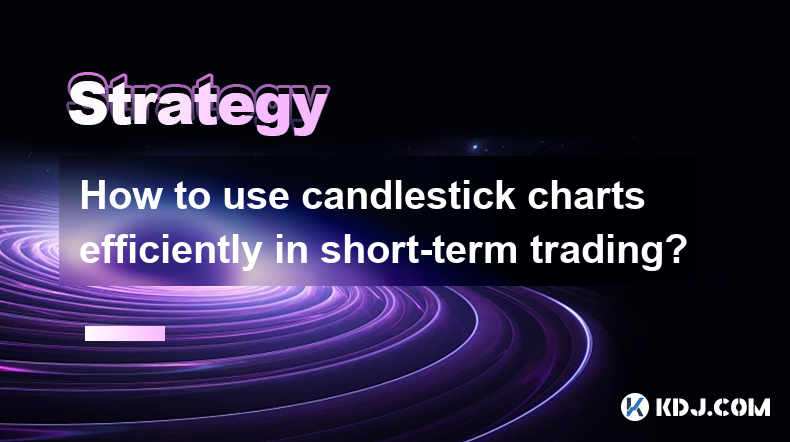
How to Use Candlestick Charts Efficiently in Short-Term Crypto Trading?
Understanding Candlestick Charts in Crypto Trading
Candlestick charts are a powerful visual tool used to analyze price movements in cryptocurrency markets. Each candlestick represents a specific time period (e.g., 1 minute, 5 minutes, 1 hour), showing the opening, closing, high, and low prices within that period. Understanding how to interpret these elements is crucial for effective short-term trading. The body of the candlestick indicates the range between the opening and closing prices, while the wicks (or shadows) show the high and low prices reached during that period. Green (or white) candles typically represent price increases, while red (or black) candles represent price decreases.
Identifying Key Candlestick Patterns for Short-Term Trading
Many candlestick patterns can predict short-term price movements. Recognizing these patterns is a key skill for short-term traders. For example, a bullish engulfing pattern, where a green candle completely engulfs the previous red candle, often signals a potential price reversal to the upside. Conversely, a bearish engulfing pattern, where a red candle completely engulfs the previous green candle, suggests a potential price reversal downwards. Other important patterns include the hammer, hanging man, shooting star, and doji. These patterns provide valuable clues, but should always be considered in conjunction with other technical indicators and market context.
Combining Candlestick Charts with Other Technical Indicators
While candlestick charts offer valuable insights, relying solely on them can be risky. Short-term traders often combine candlestick patterns with other technical indicators for improved accuracy. Moving averages, such as the 50-period and 200-period moving averages, can help identify trends and potential support and resistance levels. Relative Strength Index (RSI) and MACD can help gauge momentum and potential overbought or oversold conditions. By combining candlestick chart analysis with these indicators, traders can gain a more comprehensive understanding of the market's dynamics.
Practical Steps for Using Candlestick Charts in Short-Term Crypto Trading
Here's a step-by-step guide on how to effectively use candlestick charts for short-term crypto trading:
- Choose a reliable cryptocurrency exchange: Select an exchange with a user-friendly interface and access to real-time candlestick charts. Ensure the exchange offers a range of chart timeframes to suit your trading style.
- Select a timeframe: For short-term trading, consider using shorter timeframes like 1-minute, 5-minute, or 15-minute charts. Longer timeframes might be less suitable for quick trades.
- Identify candlestick patterns: Practice identifying common bullish and bearish candlestick patterns. Focus on understanding the context of these patterns within the broader market trend.
- Integrate with other indicators: Combine candlestick analysis with other technical indicators like moving averages, RSI, and MACD to confirm potential trading signals.
- Practice risk management: Always use stop-loss orders to limit potential losses. Never invest more than you can afford to lose.
- Backtest your strategies: Before using any strategy in live trading, backtest it using historical data to assess its effectiveness.
- Stay updated on market news: Keep abreast of market news and events that could impact the price of the cryptocurrencies you are trading. News can significantly influence short-term price movements.
Understanding Support and Resistance Levels
Support levels represent price points where buying pressure is strong enough to prevent further price declines. Resistance levels are price points where selling pressure is strong enough to prevent further price increases. Identifying these levels on candlestick charts is crucial for short-term trading. Breakouts above resistance or below support can often signal significant price movements. Traders often place buy orders near support and sell orders near resistance. However, these levels are not static and can shift based on market conditions.
Managing Risk in Short-Term Crypto Trading
Short-term trading is inherently risky. Price volatility is high, and quick changes can lead to significant losses if not managed properly. Employing proper risk management techniques is paramount. This includes:
- Using stop-loss orders: Always set stop-loss orders to automatically sell your position if the price moves against you by a predetermined amount.
- Diversifying your portfolio: Don't put all your eggs in one basket. Spread your investments across different cryptocurrencies to reduce risk.
- Position sizing: Only risk a small percentage of your capital on each trade. This helps to prevent catastrophic losses even if a trade goes wrong.
- Emotional discipline: Avoid making impulsive decisions based on fear or greed. Stick to your trading plan and avoid chasing quick profits.
Frequently Asked Questions
Q: What are the most common mistakes beginners make when using candlestick charts for short-term trading?
A: Beginners often rely solely on candlestick patterns without considering other indicators or market context. They may also fail to use proper risk management techniques, leading to significant losses. Overtrading and emotional decision-making are also common pitfalls.
Q: Are candlestick charts suitable for all types of crypto trading?
A: While effective for short-term trading, candlestick charts can also be used in longer-term strategies. However, the timeframe used will need to be adjusted accordingly. For long-term trading, longer timeframes (daily, weekly, monthly) are typically more appropriate.
Q: How can I improve my ability to interpret candlestick patterns?
A: Consistent practice is key. Study historical charts, identify patterns, and analyze their outcomes. Combine this with learning about other technical indicators to gain a more holistic understanding of price movements. Consider using a demo account to practice before using real funds.
Q: What are some good resources for learning more about candlestick chart analysis?
A: Numerous online resources exist, including educational websites, trading platforms, and books dedicated to technical analysis. Many YouTube channels also provide tutorials and explanations of candlestick patterns and their applications. Remember to critically evaluate information from various sources.
Q: Can candlestick charts predict the future with certainty?
A: No, candlestick charts cannot predict the future with certainty. They provide valuable insights into past price movements and potential future trends, but they are not foolproof. Market conditions are constantly changing, and unexpected events can significantly impact price movements. Always use them in conjunction with other analysis methods and risk management strategies.
Disclaimer:info@kdj.com
The information provided is not trading advice. kdj.com does not assume any responsibility for any investments made based on the information provided in this article. Cryptocurrencies are highly volatile and it is highly recommended that you invest with caution after thorough research!
If you believe that the content used on this website infringes your copyright, please contact us immediately (info@kdj.com) and we will delete it promptly.
- NFL overtime rules will now be uniform across the regular season and playoffs
- 2025-04-06 04:40:12
- Despite Failing to Start the Monthly Trade on a Bearish Note, the Crypto Markets Are Trying to Cope
- 2025-04-06 04:40:12
- Valuta: EOS's Strategic Rebirth
- 2025-04-06 04:35:12
- Binance Charity to Airdrop up to $1.5M in BNB to Myanmar and Thailand Earthquake Victims
- 2025-04-06 04:35:12
- Kerala: Digital Payment Systems Introduced in Government Hospitals
- 2025-04-06 04:30:12
- Pi Network price today
- 2025-04-06 04:30:12
Related knowledge
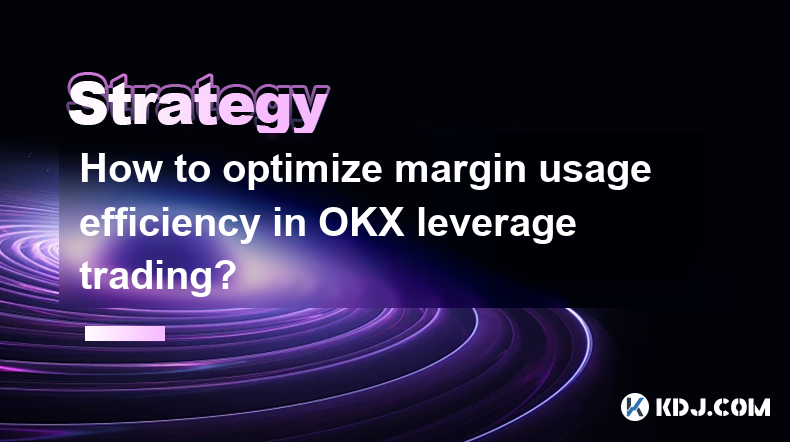
How to optimize margin usage efficiency in OKX leverage trading?
Apr 04,2025 at 03:21pm
Margin usage efficiency is a critical aspect of leverage trading on platforms like OKX, where traders aim to maximize their returns while managing risk. Understanding how to optimize margin usage can significantly enhance your trading performance. This article will delve into various strategies and techniques to help you make the most out of your margin...
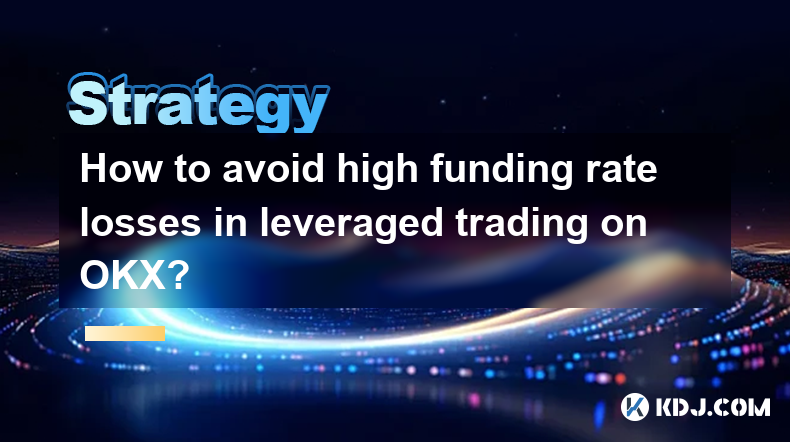
How to avoid high funding rate losses in leveraged trading on OKX?
Apr 04,2025 at 05:28pm
Understanding Funding Rates in Leveraged Trading on OKXFunding rates are a critical component of leveraged trading on platforms like OKX. They represent the periodic payments made between traders to maintain the balance between the futures price and the spot price of the underlying asset. When trading with leverage, understanding and managing funding ra...
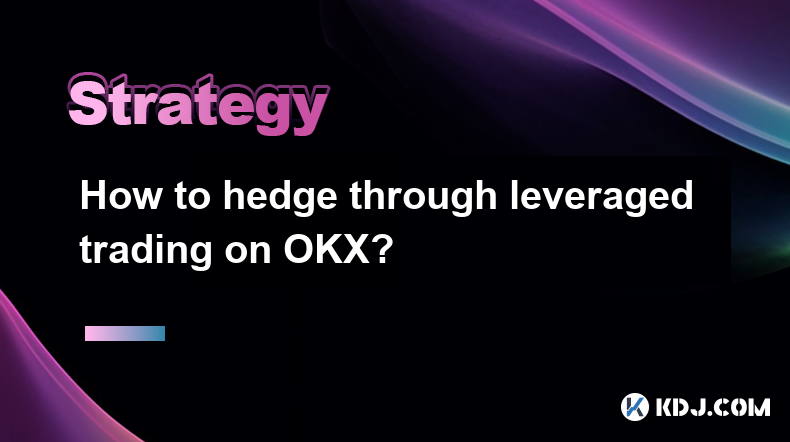
How to hedge through leveraged trading on OKX?
Apr 04,2025 at 01:42pm
Hedging through leveraged trading on OKX can be an effective strategy for managing risk in the volatile cryptocurrency market. This article will guide you through the process of setting up and executing a hedging strategy using OKX's leveraged trading features. We will cover the basics of leveraged trading, how to set up a hedge, and the steps to execut...
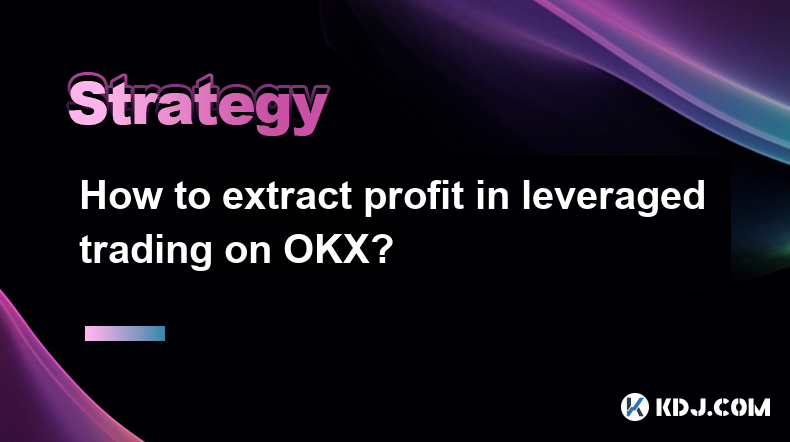
How to extract profit in leveraged trading on OKX?
Apr 04,2025 at 05:42am
Leveraged trading on OKX can be a powerful tool for traders looking to amplify their potential profits. However, it also comes with increased risk, making it essential to understand how to effectively extract profit from these trades. This article will guide you through the process of leveraging OKX's platform to maximize your gains while managing the i...
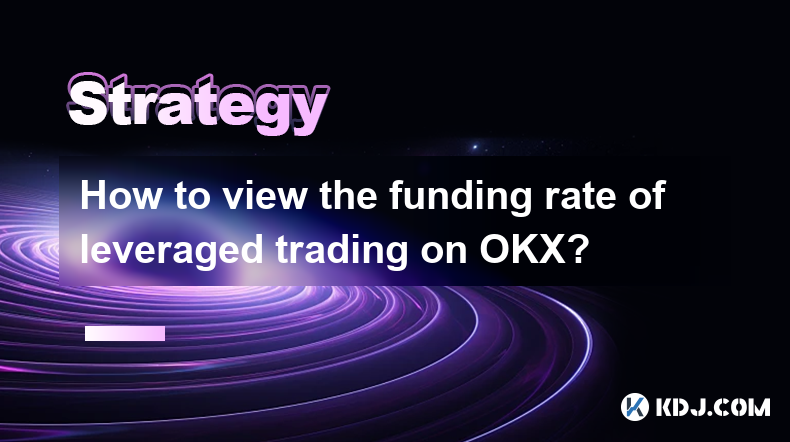
How to view the funding rate of leveraged trading on OKX?
Apr 04,2025 at 07:07am
Understanding the funding rate is crucial for anyone involved in leveraged trading on OKX. The funding rate is a mechanism used in perpetual futures contracts to ensure that the market price of the futures remains closely aligned with the spot price of the underlying asset. This article will guide you through the process of viewing the funding rate on O...
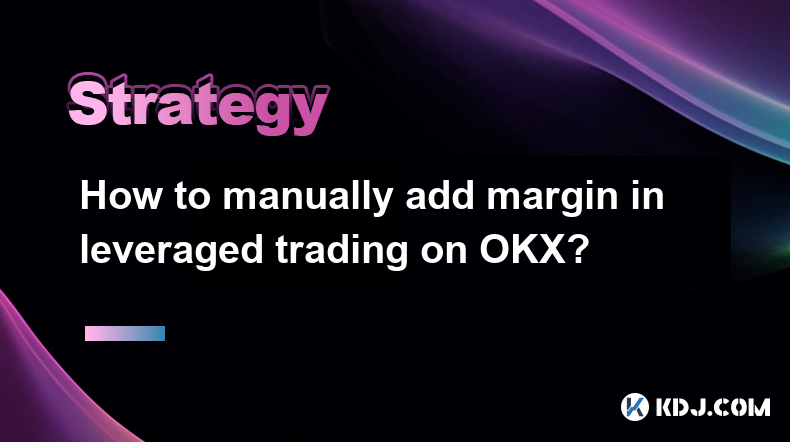
How to manually add margin in leveraged trading on OKX?
Apr 04,2025 at 05:21pm
Introduction to Margin in Leveraged Trading on OKXLeveraged trading on OKX allows traders to amplify their trading positions by borrowing funds from the platform. Margin is the amount of funds required to open and maintain these leveraged positions. Understanding how to manually add margin is crucial for managing your trades effectively and avoiding liq...

How to optimize margin usage efficiency in OKX leverage trading?
Apr 04,2025 at 03:21pm
Margin usage efficiency is a critical aspect of leverage trading on platforms like OKX, where traders aim to maximize their returns while managing risk. Understanding how to optimize margin usage can significantly enhance your trading performance. This article will delve into various strategies and techniques to help you make the most out of your margin...

How to avoid high funding rate losses in leveraged trading on OKX?
Apr 04,2025 at 05:28pm
Understanding Funding Rates in Leveraged Trading on OKXFunding rates are a critical component of leveraged trading on platforms like OKX. They represent the periodic payments made between traders to maintain the balance between the futures price and the spot price of the underlying asset. When trading with leverage, understanding and managing funding ra...

How to hedge through leveraged trading on OKX?
Apr 04,2025 at 01:42pm
Hedging through leveraged trading on OKX can be an effective strategy for managing risk in the volatile cryptocurrency market. This article will guide you through the process of setting up and executing a hedging strategy using OKX's leveraged trading features. We will cover the basics of leveraged trading, how to set up a hedge, and the steps to execut...

How to extract profit in leveraged trading on OKX?
Apr 04,2025 at 05:42am
Leveraged trading on OKX can be a powerful tool for traders looking to amplify their potential profits. However, it also comes with increased risk, making it essential to understand how to effectively extract profit from these trades. This article will guide you through the process of leveraging OKX's platform to maximize your gains while managing the i...

How to view the funding rate of leveraged trading on OKX?
Apr 04,2025 at 07:07am
Understanding the funding rate is crucial for anyone involved in leveraged trading on OKX. The funding rate is a mechanism used in perpetual futures contracts to ensure that the market price of the futures remains closely aligned with the spot price of the underlying asset. This article will guide you through the process of viewing the funding rate on O...

How to manually add margin in leveraged trading on OKX?
Apr 04,2025 at 05:21pm
Introduction to Margin in Leveraged Trading on OKXLeveraged trading on OKX allows traders to amplify their trading positions by borrowing funds from the platform. Margin is the amount of funds required to open and maintain these leveraged positions. Understanding how to manually add margin is crucial for managing your trades effectively and avoiding liq...
See all articles





















































































